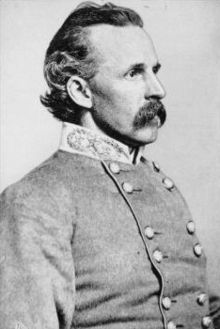
Cadmus Marcellus Wilcox was a career United States Army officer who served in the Mexican–American War and also was a Confederate general during the American Civil War.

Seth Maxwell Barton was a United States Army officer and, then, a brigadier general in the Confederate States Army during the American Civil War. He later became noted as a chemist.

Thomas Casimer Devin was a United States Army officer and general. He commanded Union cavalry during the American Civil War and during the Indian Wars.
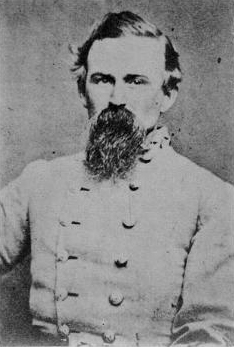
George Pierce Doles was an American businessman and Confederate general during the American Civil War. His men played a key role on the first day of the Battle of Gettysburg in driving back the Union XI Corps.

James Dearing was a Confederate States Army officer during the American Civil War who served in the artillery and cavalry. Dearing entered West Point in 1858 and resigned on April 22, 1861, when Virginia seceded from the Union. Dearing was mortally wounded at the Battle of High Bridge during the Appomattox Campaign of 1865, making him one of the last officers to die in the war. Despite serving as a commander of a cavalry brigade and using the grade of brigadier general after he was nominated to that grade by Confederate President Jefferson Davis, Dearing did not officially achieve the grade of brigadier general because the Confederate Senate did not approve his nomination. His actual permanent grade was colonel.
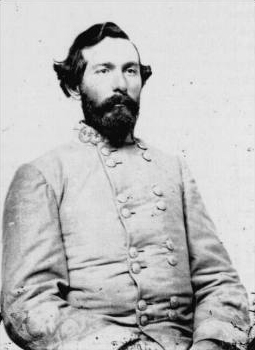
George Thomas Anderson was a general in the Confederate States Army during the American Civil War. Nicknamed "Tige", Anderson was noted as one of Robert E. Lee's hardest-fighting subordinates.
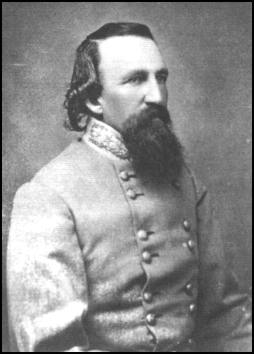
James Byron Gordon was a brigadier general in the Confederate States Army during the American Civil War. He was killed in action at the Battle of Meadow Bridge.
A. P. Hill's Light Division was an infantry division in General Robert E. Lee's Confederate Army of Northern Virginia during the American Civil War. Originally including six brigades, the division's first commander starting May 27, 1862 was then Major General A. P. Hill. Major Generals William Dorsey Pender and Cadmus M. Wilcox commanded a reorganized Light Division in the Army of Northern Virginia after Hill's promotion to corps command and Pender's death at the Battle of Gettysburg, respectively.

William Francis Bartlett was a general in the Union Army during the American Civil War and, later, an executive in the iron industry.
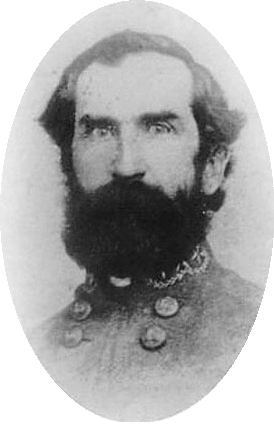
John King Jackson was an American lawyer and soldier. He served as a Confederate general during the American Civil War, mainly in Florida and the Western Theater of the conflict. Afterward Jackson resumed his law practice until dying from pneumonia a year after the war ended.

Tyree Harris Bell was a Confederate States Army brigadier general, during the American Civil War.
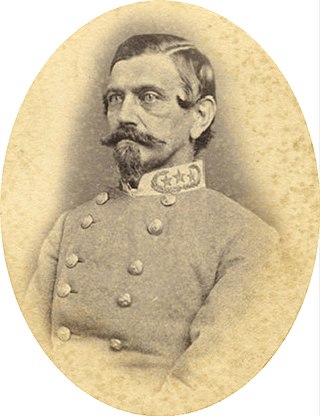
James Cantey was a Confederate States Army brigadier general during the American Civil War. He was a lawyer, slave owner, state legislator in South Carolina and officer in the Mexican–American War, and a slave owner in Alabama both before and after the war.
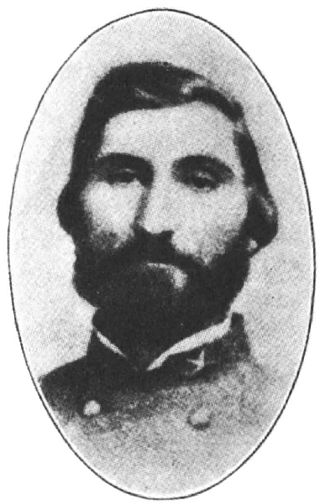
Samuel Benton (1820–1864) was an American attorney, newspaper publisher and politician. He served as a colonel in the Confederate States Army during the American Civil War. He was promoted to brigadier general but died two days later before the notification of his promotion reached him.
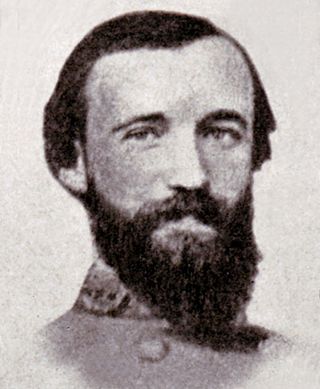
Victor Jean Baptiste Girardey was a Confederate States Army officer during the American Civil War. He was promoted from Captain to temporary Brigadier General less than a month before his death in battle. Girardey had served as a staff officer from the beginning of the war until August 3, 1864. Then, he was promoted to temporary brigadier general, to rank from July 30, 1864, and assumed command of Ambrose R. Wright's former brigade on the Darbytown Road on the eastern end of the defenses of Richmond, Virginia. On August 16, 1864, during the Second Battle of Deep Bottom, Girardey was killed in action near Fussell's Mill in Henrico County, Virginia.
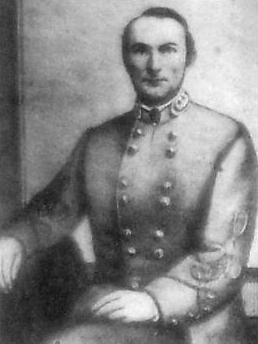
Benjamin Jefferson Hill was a Confederate States Army brigadier general during the American Civil War. Before the war, he was a merchant and served in the Tennessee Senate. After the war, he was a merchant, lawyer and president of the McMinnville and Manchester Railroad.

James Phillip Simms was a Confederate States Army brigadier general during the American Civil War. He was a lawyer in Covington, Georgia, before and after the war. He served two non-consecutive terms in the Georgia legislature after the war.

David Addison Weisiger was a Confederate States Army brigadier general during the American Civil War. Weisiger served as a second lieutenant in the 1st Virginia Volunteers, an infantry regiment, during the Mexican–American War. After the war, he became a leading businessman in Petersburg, Virginia. Between 1853 and 1860, he served in the 39th Virginia Militia Regiment, rising from captain to colonel. After the Civil War, he was a bank cashier at Petersburg, Virginia and a businessman at Richmond, Virginia.

Wilburn Hill King was a Confederate States Army colonel during the American Civil War. He was assigned to duty as a brigadier general by General E. Kirby Smith but he was not officially appointed and confirmed to that grade.
Reuben Walker Carswell was a lawyer, member of the Georgia State Legislature, Confederate States Army lieutenant colonel and brigadier general in the Georgia militia during the American Civil War, and, after the war, a lawyer and judge.

The 1st Florida Infantry Regiment was an infantry regiment raised by the Confederate state of Florida during the American Civil War. Raised for 12 months of service its remaining veterans served in the 1st (McDonell's) Battalion, Florida Infantry from April 1862 on. In August the depleted battalion was consolidated with the 3rd (Miller's) Battalion into the reorganized 1st Florida Infantry Regiment again. In December 1862 it merged with the 3rd Florida Infantry Regiment and received the form it kept till the war's end as the 1st and 3rd Consolidated Florida Infantry Regiment. Fighting as part of the Army of Tennessee in the Western Theater of the American Civil War it was surrendered on April 26, 1865.
